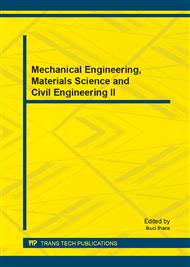p.529
p.534
p.539
p.543
p.547
p.553
p.559
p.563
p.567
Numerical Investigation of Static Strength for Tubular Joints Reinforced by Inner Plate
Abstract:
Welded tubular joints are widely used in long-span, space and offshore structures. In a welded tubular joint, the chord is generally subjected to loads in radius direction which are transmitted from the brace members in axial direction. As the strength of the chord in radius direction is generally much weaker than that of the brace in axial direction, failure occurs easily at the weld toe on the chord surface. To improve the bearing capacity of the joint structure, reinforcement is necessary. Several reinforcing methods were reported in the literature, such as doubler or collar plate reinforcement, internal stiffened ring reinforcement and bracket reinforcement etc. This paper presents the strengthening method by inner plate. From finite element analysis of many inner plated reinforced tubular joint models, the efficiency of reinforcement by inner plate is analyzed by comparing the static strength of reinforced models with that of unreinforced models. Based on a parametric study of the static strength of tubular joints reinforced by inner plate, the design considerations on inner plate strengthening tubular joints are also proposed.
Info:
Periodical:
Pages:
547-552
Citation:
Online since:
December 2013
Authors:
Price:
Сopyright:
© 2014 Trans Tech Publications Ltd. All Rights Reserved
Share:
Citation:


